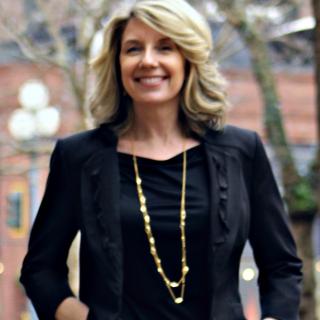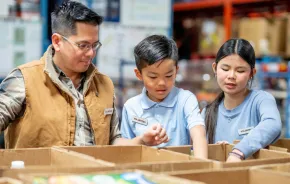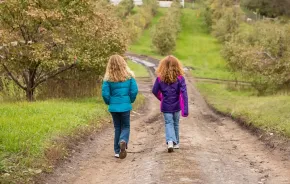Editor’s note: In this nine-month series we will explore how new voluntary standards developed in Washington state are impacting the quality of after-school programs that serve about 134,000 youths after the school bell rings. We will explain what parents should seek in a program, look at research on the impacts of quality care on kids’ development and academics, and visit with programs that are successfully serving kids and helping families. After-school Special’s independently reported content is funded by a journalism grant in partnership with the Raikes Foundation and School’s Out Washington.
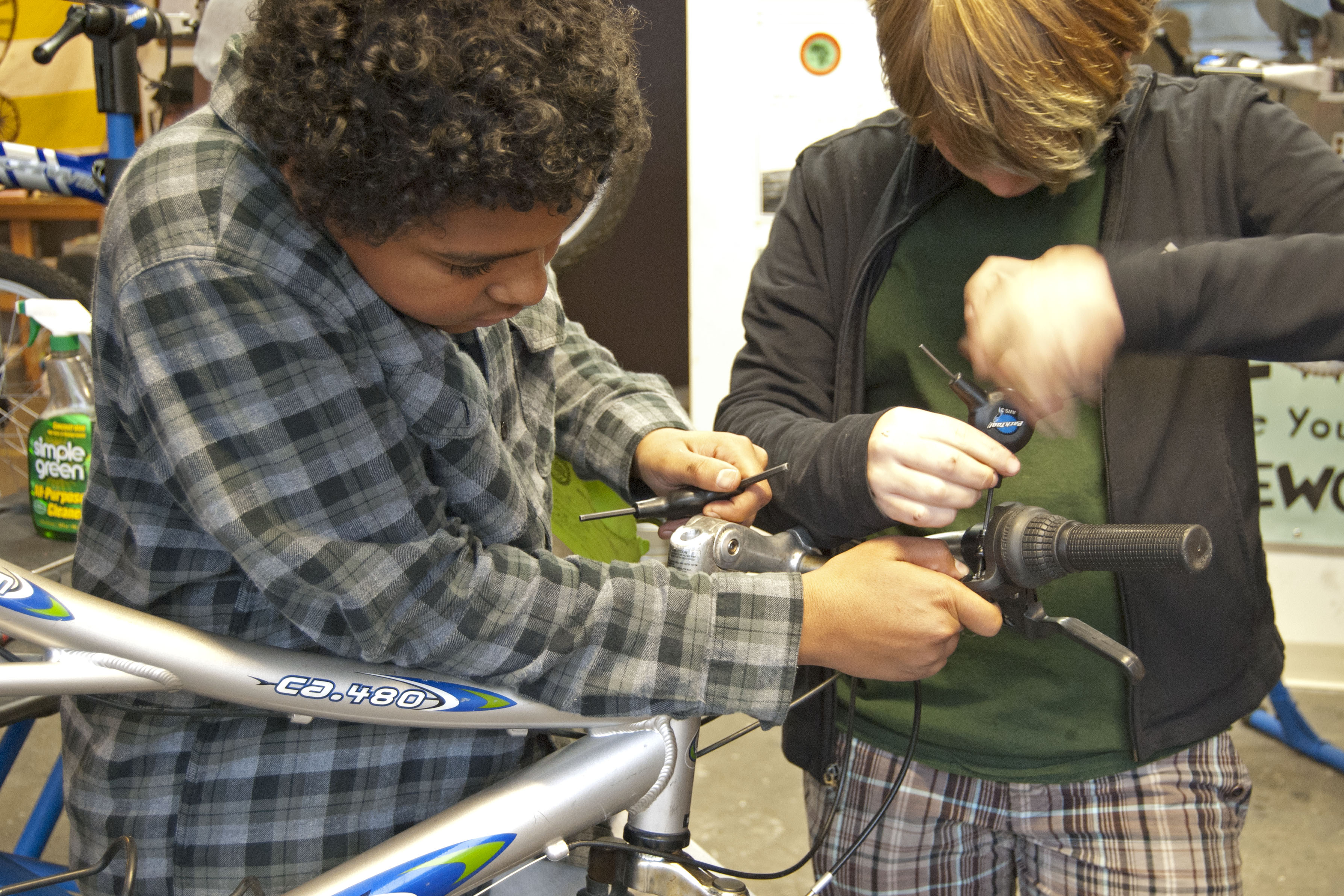
In a classroom of boys, groups of three gather around their bike stands. Some students experiment with wrenches to figure out which kind will loosen frozen bolts on wheels. Others cooperate to remove rusty chains, an important step to get these not so gently used bikes back into working condition.
Instructor Ricardo Rodriguez, aka “Ricky,” walks around the room, slipping easily between Spanish and English as he offers tips. “Who’s ever heard of ‘lefty loosey, righty tighty’?” Today’s class is “All Boys Earn a Bike”; yesterday’s class was for girls only, and there are also coed options. The boys range from 9 years old to high school age; 70 percent are youths of color.
This after-school program at Bike Works, in Seattle’s Columbia City neighborhood, teaches real-life skills, from rebuilding bicycles to building friendships, from the ground up. “We say the bicycle is a tool of freedom,” explains program director Tina Bechler, “but it leads to conversations about opportunities, how the world is changing, bigger issues.” The kids will get to keep a refurbished bike at the end of the eight-week program. And with actively involved alumni — who, until they reach the age of 18, are invited to weekly class drop-ins — relationships are formed. It is a bond that, for many kids, is stronger than those they have at school and maybe even at home.
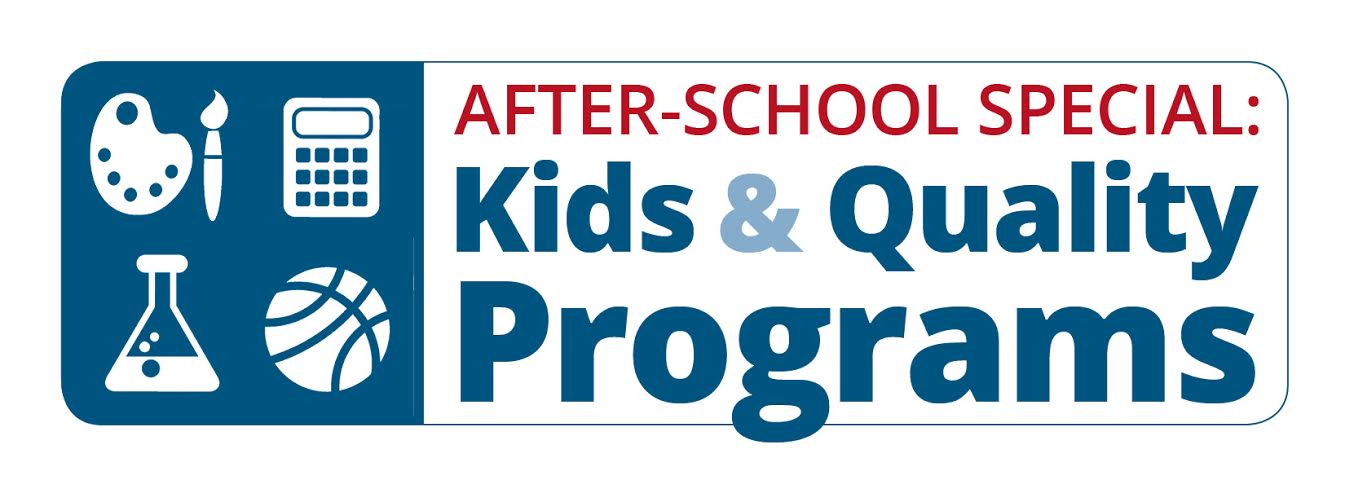 When parents are looking for ways for their kids to be supervised and occupied in the hours after school until dinnertime, they might not be thinking first and foremost about relationships. But experts say that relationships in after-school programs are critically important. “Relationships with staff, if you had to focus on one thing, I would say that is the most important,” says Deborah Lowe Vandell, dean of the School of Education at the University of California–Irvine and a leader in research on the academic and developmental impacts of after-school programs.
When parents are looking for ways for their kids to be supervised and occupied in the hours after school until dinnertime, they might not be thinking first and foremost about relationships. But experts say that relationships in after-school programs are critically important. “Relationships with staff, if you had to focus on one thing, I would say that is the most important,” says Deborah Lowe Vandell, dean of the School of Education at the University of California–Irvine and a leader in research on the academic and developmental impacts of after-school programs.
Promoting relationship building in an after-school program can feel, for program organizers and for kids, like walking on a treadmill; even strong programs can see frequent staff turnover. Besides defining quality standards, School’s Out Washington offers support and training for participating programs several times throughout the year as part of the Youth Program Quality Initiative (YPQI), an improvement road map of voluntary quality standards launched in 2009.
At a presentation for Washington state lawmakers and state Superintendent of Public Instruction Randy Dorn in September, Vandell called these “exciting times” for those studying the developmental and academic impacts of after-school programs. The beneficial short-term effects of quality after-school programs are well documented. Vandell says there is also growing evidence of meaningful longer-term outcomes, including gains in math achievement as measured by Woodcock-Johnson standardized assessments.
For some groups, YPQI meant a whole new approach; for instance, challenging students to build leadership in a way they might not have been encouraged to do before. For others, like Bike Works, which implemented YPQI’s quality standards in 2011, the changes were more subtle but still important. Bechler says their new facility was built with the YPQI model in mind. Benches and workspaces can be moved and manipulated as kids see fit. “Adults hold the health and safety container, but youth are running things, rather than the almighty adult figure,” she says.
Research suggests these differences are most critical for children from lower-income households. In their book Whither Opportunity?, UC–Irvine researcher Greg Duncan and Harvard University’s Richard Murnane shine light on the corrosive effects of unequal family resources. “As the incomes of affluent and poor families have diverged over the past three decades,” they write, “so, too, has the educational performance of their children.”
One factor for this widening gap is the vast difference in spending on enrichment activities. The reality is, even if parents in the bottom quintile, or lowest 20 percent of income earners, want their children involved in music lessons, family travel and camps, the costs of such programs put them out of reach. Between 1972 and 2008, American families in the upper quintile of incomes more than doubled spending on enrichment per child, increasing dollars spent from $3,536 to $8,872 (measured in 2008 dollars), according to Vandell. In comparison, families in the lowest quintile of earners spent $835 per child in 1972 and $1,315 in 2008.
Time and exposure are factors, too. Sometimes, young people do not get the opportunity to forge their own mentoring relationships because they are caring for their own relatives. “Parents can’t afford to have younger kids in child care … the older siblings do want to help, but really, they end up suffering, and their school[work] suffers, too,” says Deidre McCormick Martin, executive director of Summer Search Seattle, a nonprofit that helps high-potential but underresourced youths through high school and college.
Many after-school programs offer financial assistance: Seventy percent of the youths enrolled in Bike Works programs receive scholarships to cover their program fees. Offering young people the opportunities for relationship building over a period of years — with peers as well as staff — manifests as a child’s strengthened sense of pride, Bechler says. “I might hear a 9-year-old say, ‘I work at Bike Works!’ And I’ll think, ‘Yes, yes, he does.’”




